In Focus
The market for smart grid rollout in Asia-Pacific
Rocketing demands for power across the Asia-Pacific has fuelled a growing market for smart grid technology. Energy providers in countries like China, Japan and India have raised the need to introduce efficient ways to generate electricity, but a cautious approach left the region lagging behind the US and Europe. The smart grid market in the Asia Pacific (APAC) region has emerged slowly over the past few years; increased consumption of electricity in countries like China, Japan and India has raised the need to introduce alternative measures to generate or to save electricity. The development of smart grids has therefore picked up steam in several countries such as Australia, New Zealand, China, Singapore, South Korea and India. The smart grid market and its enabling technologies are emerging slowly in the APAC region. The initiative to roll out smart meters was first undertaken by the Australian market, and New Zealand is currently in the growth stage of rolling out smart metering on its grid infrastructure. China also initiated the process of smart grid development from 2007 under the guidance of the Joint US China Cooperation for Clean Energy (JUCCCE). Although, the smart grid market has began to take shape in Asia Pacific region it still does not compare with smart grid markets in North America and Europe. The slow growth of the activities in APAC related to smart grids can be attributed to the cautious approach taken by governments to incorporate smart grid technologies into their systems. Leading the pumped hydro market "The smart grid market in the Asia Pacific (APAC) region has emerged slowly over the past few years." The pumped hydro market and super capacitor market constitutes the APAC energy storage market for the smart grid. The APAC region is the global market leader in the pumped hydro market. The deployment of smart grids will boost the market for advanced energy storage systems in the APAC region. The market for broadband over power lines (BPL) is yet to take off in a big way in the Asian mainland. However, the outcome of a number of projects initiated in India, South Korea and Indonesia will determine the viability of rolling out the technology on a larger scale. There is huge potential for high voltage direct current (HVDC) in APAC. A number of HVDC projects have already been undertaken during the period from 1965 to 2008 and there are more upcoming projects that will be implemented in the near future. The APAC market for renewable power generation systems related to smart grids is mainly composed of solar and wind energy markets. Renewable incentives for smart rollout The APAC wind energy market was the third largest in the world until 2008 and was concentrated in the markets of New Zealand, Australia, Japan and China. Signs of growth in the solar photo voltaic (PV) sector can also be seen in the region. Therefore, renewable power generation markets in the APAC region provide significant growth potential to the main players in this sector. Key driving factors for implementing smart grid technologies in the current grid infrastructure could be integrating low carbon technologies, reducing power transmission and distribution (T&D) loss, reducing risk of outages, optimising consumption of electricity, incorporating renewables and so on. "The deployment of smart grids will boost the market for advanced energy storage systems in the APAC region." There has also been a significant increase in greenhouse gas (GHG) emissions in the APAC region in the recent years. Apart from transportation, the GHG emitted from the traditional coal fired power plants can be a serious threat to the environment in the long run. Therefore, reducing carbon emissions is a major factor for smart grid deployments in the APAC region. The use of HVDC in the present grid will help reduce the loss of power in T&D significantly. The smart grid will employ a mix of renewable and non-renewable resources, thus decreasing consumption and dependence on fossil fuels imported from oil-producing nations to meet their energy needs. Smart grid projects in Asia Pacific A number of smart grid pilot projects have been witnessed in APAC region in the recent years. These projects are aimed to improve energy efficiency and reduce global warming. The smart grid technology will help to modernise and improve the efficiency of the legacy power grid infrastructure in APAC nations. The use of renewable sources in the smart grid will be much higher with the deployment of advanced storage systems. Two way communication between consumers and utilities will form the backbone of smart grids, enabling reduction in peak demand an reducing consumption of electricity overall. Optimising operation of the current grid assets and active participation of customers are some of the characteristics of the smart grid that are unavailable in the traditional grid infrastructure. Apart from this, smart grids bring numerous other benefits to both the utility provider as well as the end user, like effective management of power consumption, reduction in operation and maintenance cost, cost saving from reducing peak loads etc. However, challenges such as high cost of capital, policy and regulation barriers and consumer unawareness are some of the deterring factors acting as barriers against the growth of smart grid technology in APAC countries. Policies and standards for smart grids in the APAC region are yet to be developed but they do have policies related to increasing the efficiency of the power grid. The smart grid related policies and programmes have been undertaken by some of the APAC nations such as Australia, China and India. Settling on smart grid standards "A number of smart grid pilot projects have been witnessed in APAC region in the recent years." Standards are required for ensuring the interoperability between the different elements of the grid and between the same products from different manufacturers. A few of the smart grid related standards are ANSI C12.19, C12.22, IEEE1547, ZigBee and IEC 61850. The standards for smart grid technology in the APAC region are yet to be established. In terms of competitive landscape, APAC smart grid industry is marked by the presence of global players with prior expertise in smart grids and its related technologies. Major players in APAC smart grid market include ABB LTD, ALSTOM, American Superconductors, Itron, Siemens AG, Telvent and Landis+Gyr. Smart metering in the smart grid industry consists of global players like Itron Inc. and Landis+Gyr, while the HVDC industry consists of players such as ABB Ltd and Siemens AG. The financial activities related to this sector are limited to major players. The lack of local companies has reduced the degree of competition for smart grid segments. However, there have been proposed smart grid investments in some of the regions of the APAC, such as South Korea, India, Sri Lanka, Bangladesh, China and Australia. It has been noticed that the cautious approach taken by the smart grid companies in the Asia-Pacific region is due to the absence of an immediate market, thus limiting growth of smart infrastructure in the region.
The market for smart grid rollout in Asia-Pacific
Rocketing demands for power across the Asia-Pacific has fuelled a growing market for smart grid technology. Energy providers in countries like China, Japan and India have raised the need to introduce efficient ways to generate electricity, but a cautious approach left the region lagging behind the US and Europe. The smart grid market in the Asia Pacific (APAC) region has emerged slowly over the past few years; increased consumption of electricity in countries like China, Japan and India has raised the need to introduce alternative measures to generate or to save electricity. The development of smart grids has therefore picked up steam in several countries such as Australia, New Zealand, China, Singapore, South Korea and India. The smart grid market and its enabling technologies are emerging slowly in the APAC region. The initiative to roll out smart meters was first undertaken by the Australian market, and New Zealand is currently in the growth stage of rolling out smart metering on its grid infrastructure. China also initiated the process of smart grid development from 2007 under the guidance of the Joint US China Cooperation for Clean Energy (JUCCCE). Although, the smart grid market has began to take shape in Asia Pacific region it still does not compare with smart grid markets in North America and Europe. The slow growth of the activities in APAC related to smart grids can be attributed to the cautious approach taken by governments to incorporate smart grid technologies into their systems. Leading the pumped hydro market "The smart grid market in the Asia Pacific (APAC) region has emerged slowly over the past few years." The pumped hydro market and super capacitor market constitutes the APAC energy storage market for the smart grid. The APAC region is the global market leader in the pumped hydro market. The deployment of smart grids will boost the market for advanced energy storage systems in the APAC region. The market for broadband over power lines (BPL) is yet to take off in a big way in the Asian mainland. However, the outcome of a number of projects initiated in India, South Korea and Indonesia will determine the viability of rolling out the technology on a larger scale. There is huge potential for high voltage direct current (HVDC) in APAC. A number of HVDC projects have already been undertaken during the period from 1965 to 2008 and there are more upcoming projects that will be implemented in the near future. The APAC market for renewable power generation systems related to smart grids is mainly composed of solar and wind energy markets. Renewable incentives for smart rollout The APAC wind energy market was the third largest in the world until 2008 and was concentrated in the markets of New Zealand, Australia, Japan and China. Signs of growth in the solar photo voltaic (PV) sector can also be seen in the region. Therefore, renewable power generation markets in the APAC region provide significant growth potential to the main players in this sector. Key driving factors for implementing smart grid technologies in the current grid infrastructure could be integrating low carbon technologies, reducing power transmission and distribution (T&D) loss, reducing risk of outages, optimising consumption of electricity, incorporating renewables and so on. "The deployment of smart grids will boost the market for advanced energy storage systems in the APAC region." There has also been a significant increase in greenhouse gas (GHG) emissions in the APAC region in the recent years. Apart from transportation, the GHG emitted from the traditional coal fired power plants can be a serious threat to the environment in the long run. Therefore, reducing carbon emissions is a major factor for smart grid deployments in the APAC region. The use of HVDC in the present grid will help reduce the loss of power in T&D significantly. The smart grid will employ a mix of renewable and non-renewable resources, thus decreasing consumption and dependence on fossil fuels imported from oil-producing nations to meet their energy needs. Smart grid projects in Asia Pacific A number of smart grid pilot projects have been witnessed in APAC region in the recent years. These projects are aimed to improve energy efficiency and reduce global warming. The smart grid technology will help to modernise and improve the efficiency of the legacy power grid infrastructure in APAC nations. The use of renewable sources in the smart grid will be much higher with the deployment of advanced storage systems. Two way communication between consumers and utilities will form the backbone of smart grids, enabling reduction in peak demand an reducing consumption of electricity overall. Optimising operation of the current grid assets and active participation of customers are some of the characteristics of the smart grid that are unavailable in the traditional grid infrastructure. Apart from this, smart grids bring numerous other benefits to both the utility provider as well as the end user, like effective management of power consumption, reduction in operation and maintenance cost, cost saving from reducing peak loads etc. However, challenges such as high cost of capital, policy and regulation barriers and consumer unawareness are some of the deterring factors acting as barriers against the growth of smart grid technology in APAC countries. Policies and standards for smart grids in the APAC region are yet to be developed but they do have policies related to increasing the efficiency of the power grid. The smart grid related policies and programmes have been undertaken by some of the APAC nations such as Australia, China and India. Settling on smart grid standards "A number of smart grid pilot projects have been witnessed in APAC region in the recent years." Standards are required for ensuring the interoperability between the different elements of the grid and between the same products from different manufacturers. A few of the smart grid related standards are ANSI C12.19, C12.22, IEEE1547, ZigBee and IEC 61850. The standards for smart grid technology in the APAC region are yet to be established. In terms of competitive landscape, APAC smart grid industry is marked by the presence of global players with prior expertise in smart grids and its related technologies. Major players in APAC smart grid market include ABB LTD, ALSTOM, American Superconductors, Itron, Siemens AG, Telvent and Landis+Gyr. Smart metering in the smart grid industry consists of global players like Itron Inc. and Landis+Gyr, while the HVDC industry consists of players such as ABB Ltd and Siemens AG. The financial activities related to this sector are limited to major players. The lack of local companies has reduced the degree of competition for smart grid segments. However, there have been proposed smart grid investments in some of the regions of the APAC, such as South Korea, India, Sri Lanka, Bangladesh, China and Australia. It has been noticed that the cautious approach taken by the smart grid companies in the Asia-Pacific region is due to the absence of an immediate market, thus limiting growth of smart infrastructure in the region.
Japanese minister forced out after joke on radiation
Yoshio Hachiro stepped down as head of the Ministry of Economy, Trade and Industry after calling the evacuation zone around the Fukushima nuclear plant “towns of death”.
China and Kazakhstan to expand gas pipeline network in Central Asia
The capacity of Pipeline “C” will rise to 25 billion cubic meters a year by December 2015.
China accounts for 24.5% of global wind energy capacity
A total of 18,405 megawatts of wind power were installed in the first half of this year around the world, up from 16,000 MW in 2010.
The Philippines is on the road towards 90% household electrification
The Philippine government seeks to energize around 370,900 new household connections every year until 2017.
Russia eyes on Central Asia's mass energy projects
Russia on Friday showed big interest in joining a project to build a gas pipeline linking Turkmenistan, Afghanistan, Pakistan and India, according to Xinhua News.
India could get up to 7% power requirements from solar, says study
A study published by a global consultation firm KPMG has forecasted that solar power can meet 5-7 per cent of India’s total power requirements by 2021-22.
India targets over 50,000 Mw of nuclear power by 2030: ex-official
India will boost its nuclear energy generating capacity to 50,000-60,000 Mw by 2030 and plans to import light water reactors from Russia, US and France, said former Atomic Energy Commission chairman M R Srinivasan.
Japan’s lower house gives green light on renewable energy bill
The question is, can the country live without nuclear power?
Indochina to amp up investments in thermal and hydro power projects
Vietnam, Cambodia and Laos are planning for significant investment increases in their electricity generation capacity in order to keep pace with the rising demand.
Sahara India to develop 6,000MW Indian projects with Korean group
Sahara India Power and Korea East-West Power have entered into a pact for developing power plants, with a total capacity of 6,000 MW.
Bangladesh gets funding for critical power projects
The ADB is extending a $300 million loan to Bangladesh to fund five aging generation units at Ashuganj power station with a new energy-efficient combined cycle power plant using natural gas as the fuel source.
Japan to set up new nuclear agency under environment ministry
Japan will set up a new nuclear regulatory agency under the Environment Ministry instead of the trade ministry. This is meant to increase the body's independence after the country’s atomic disaster, officials said. Chief Cabinet Secretary Yukio Edano said the Cabinet was expected to approve the plan by Monday. The current Nuclear and Industrial Safety Agency has been widely criticised for cosy ties with the nuclear industry under the Ministry of Economy, Trade and Industry, which promotes nuclear energy. “We expect to make the agency an affiliate of the Environment Agency,” Edano said. “Environment and nuclear issues have a certain affinity for each other.” Under the plan, drafted by Goshi Hosono, minister in charge of the nuclear crisis, NISA would be integrated with the Nuclear Safety Commission, an independent panel of experts under the Cabinet Office, to become a more independent entity distanced from the nuclear industry and other promoters of atomic power.
Energy fund to ease govt control on Vietnam power industry
Saigon Asset Management Corp. plans to raise $300 million for an energy fund that would be the country’s largest.
Government says India's nuke plants could withstand disasters
Indian nuclear plants will be able to withstand “extreme natural events” like tsunamis, cyclones, floods and dam breaks, according to a nuclear safety review.
India's NHPC to invest Rs 15,000 crore in Myanmar
India's state-run NHPC would invest around Rs 15,000 crore for developing two hydropower projects in the neighbouring country Myanmar.
S. Korea, India sign pact for nuclear cooperation
South Korea can now export atomic power plants to India after an agreement was reached by the two countries.
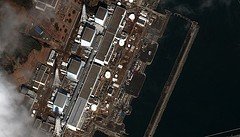
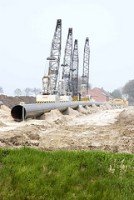

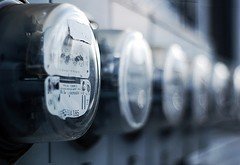
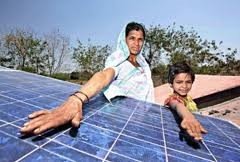

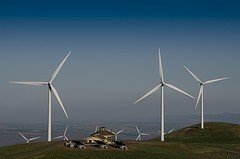
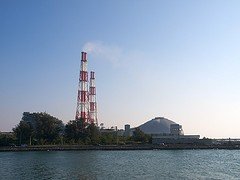
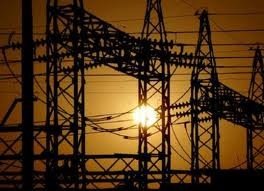
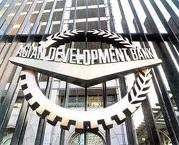
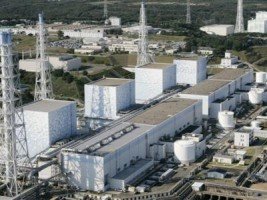
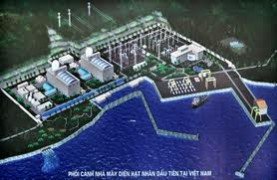
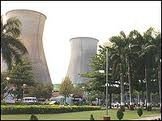
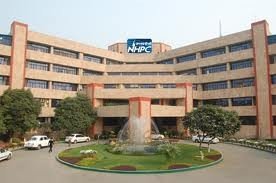
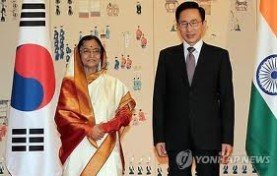

 Advertise
Advertise



















